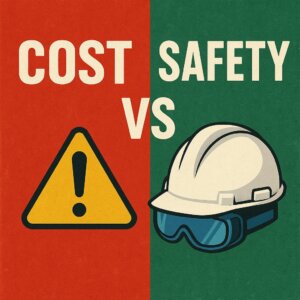Confined spaces—such as underground pipelines, storage tanks, and chemical reactors—pose severe risks due to limited entry/exit points, poor ventilation, and potential exposure to toxic gases. With evolving safety regulations and technological advancements, modern entry equipment and rescue systems have become critical in mitigating these hazards. This blog explores the latest tools, standards, and innovations shaping confined space operations and emergency response.
I. Core Equipment for Confined Space Operations
-
Gas Detection and Ventilation Systems
- Multi-Gas Monitors: Continuously measure O₂ (19.5–23.5%), LEL (≤10%), H₂S, and CO levels. Wireless models transmit real-time data to supervisors and trigger alarms for critical thresholds.
- Smart Ventilation Units: IoT-controlled blowers provide pre-entry air exchange (≥30 minutes) and adjust airflow based on dynamic gas readings.
-
Personal Protective Equipment (PPE)
- Respiratory Protection: Positive pressure air respirators (SCBA) for oxygen-deficient environments; gas-tight chemical suits with EN 943 certification for toxic atmospheres.
- Explosion-Proof Gear: Anti-static clothing, intrinsically safe headlamps (≤12V), and insulated tools to prevent ignition.
-
Training and Permit Systems
- VR Simulation Platforms: Train workers in virtual confined spaces (e.g., 1.7×1.4×2.4m mock-ups) for hazard recognition and emergency drills.
- E-Permit Systems: Digitally manage entry permits, lockout/tagout (LOTO) protocols, and link approvals to access controls.
This Video from YouTube shows detailed Confined Space Entry Training and why Personal Protective Equipment is necessary.
II. Advanced Rescue Technologies
-
Real-Time Monitoring and Alerts
- Wearable Sensors: Body-worn devices detect gas exposure, heart rate, and motion. Alerts include vibrations, LED flashes, and GPS coordinates for rapid location tracking.
- Smart Safety Lines: Rescue ropes with load sensors activate alarms if a worker falls or becomes unresponsive.
-
Mechanical Rescue Devices
- Tripod and Winch Systems: Explosion-proof winches (60m steel cable, ≥300kg capacity) with self-retracting lifelines (SRLs) for vertical rescues.
- Collapsible Stretchers: Carbon fiber designs for narrow spaces, paired with full-body harnesses to immobilize casualties.
-
Communication and Coordination
- ATEX-Certified Radios: Noise-cancelling, explosion-proof devices for voice/video transmission in smoky environments.
- Centralized Dashboards: Display real-time worker vitals, gas levels, and rescue resource locations for command centers.
III. Selection Criteria and Best Practices
-
Compliance with Standards
- Prioritize equipment certified to OSHA 1910.146 (U.S.), ISO 23616:2024 (global), or EN 16985:2023 (EU).
- Example: Gas detectors must meet EN 60079-0 for explosive atmospheres.
-
Dynamic Risk Management
- Use AI-powered predictive analytics to model gas dispersion and preempt hazards.
- Implement redundant systems (e.g., dual power supplies, hybrid wired/wireless comms).
-
Ergonomics and Efficiency
- Opt for lightweight, modular PPE (e.g., split-design suits) to maintain mobility.
- Conduct fit tests for respirators and ensure compatibility between devices.
IV. Global Standards and Emerging Trends
-
Regulatory Updates
- ISO 23616:2024: Mandates sensor calibration (O₂ accuracy ≤1%) and maintenance logs.
- NFPA 350-2023: Requires rapid evacuation tools (e.g., escape chutes) in confined spaces.
-
Innovations Redefining Safety
- Nano-Sensors: Detect sub-ppm gas concentrations with millisecond response times.
- Rescue Robots: ATEX-rated drones and crawlers with robotic arms for preliminary searches.
- Digital Twin Training: VR/AR simulations replicate high-risk scenarios (e.g., H₂S leaks) for immersive drills.
V. Conclusion
Confined space operations demand a holistic approach integrating ventilation, detection, PPE, and rescue readiness. While smart technologies like IoT-enabled monitors and AI-driven analytics are transforming safety protocols, adherence to global standards remains non-negotiable. As industries push toward automation and robotics, the future lies in adaptive rescue systems and zero-human-entry solutions—ensuring no life is endangered in the world’s most hazardous workspaces.
Key References
- OSHA 1910.146: Permit-Required Confined Spaces
- ISO 23616:2024: Guidelines for Confined Space Equipment Maintenance
- EN 16985:2023: Respiratory Protective Devices for Industrial Use
- NFPA 350: Confined Space Rescue and Emergency Response








